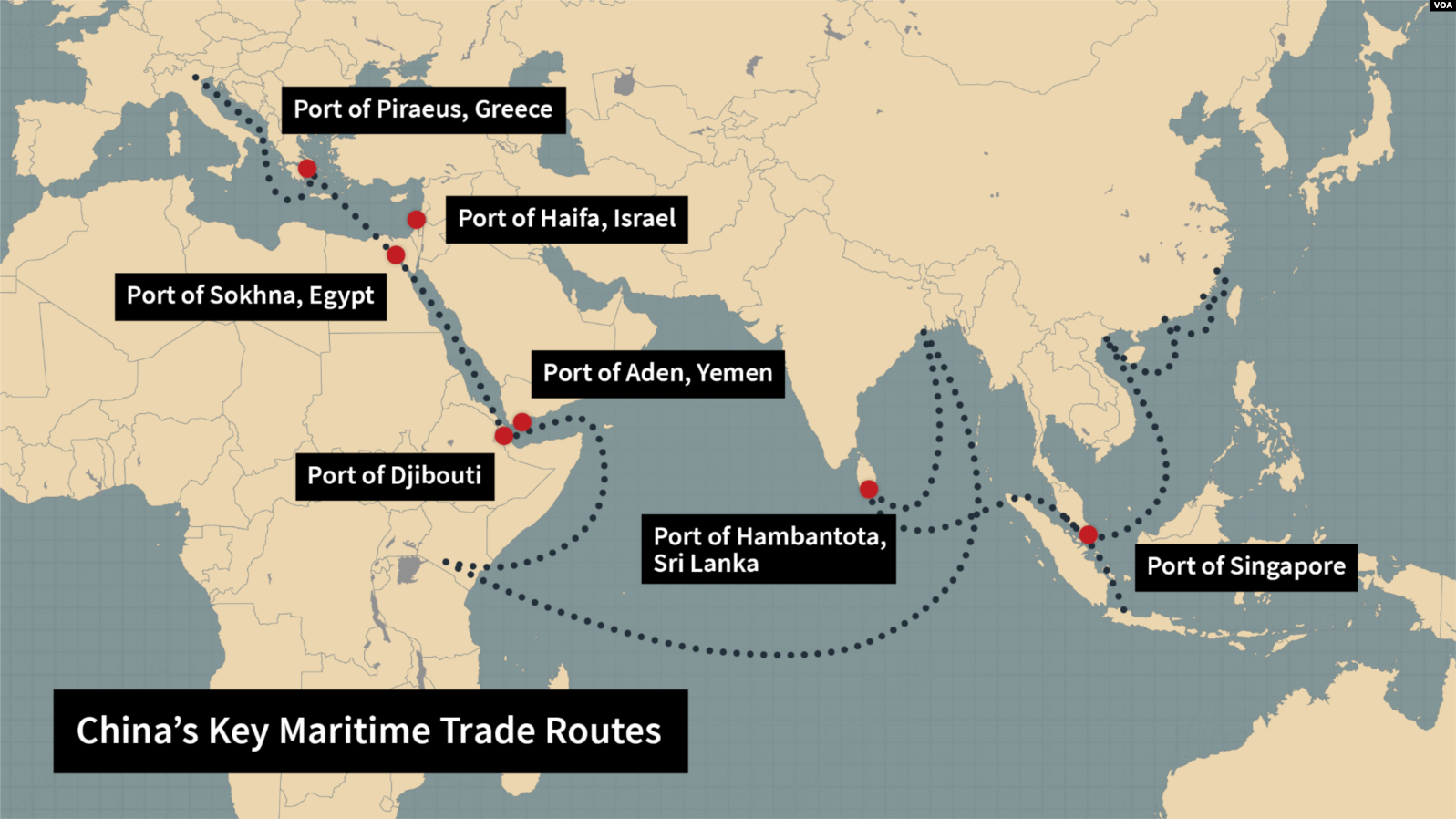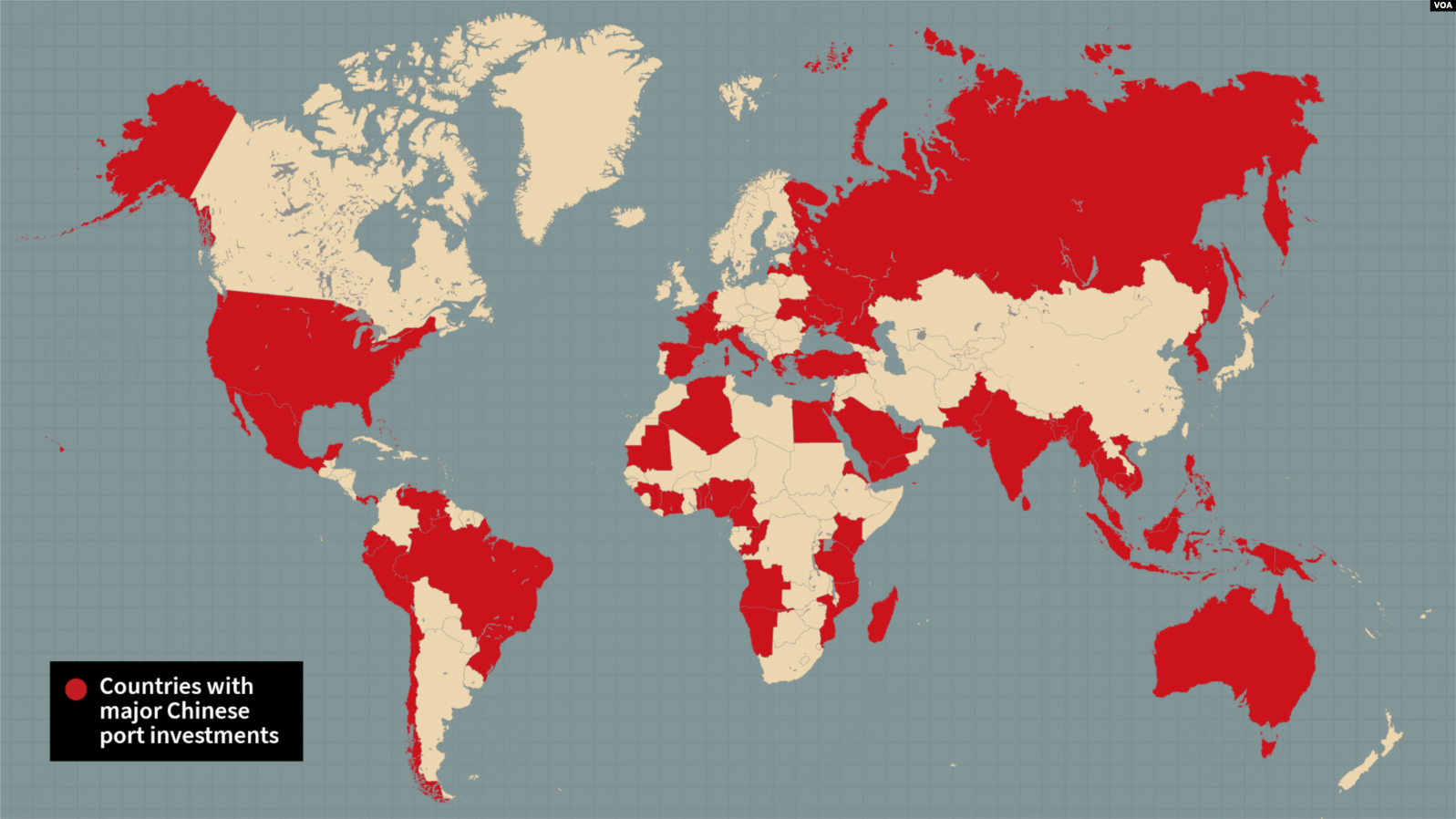Sleepwalking Into a Colossus's Web of Monopolistic Influence
 |
Chinese President Xi Jinping and Greek Prime Minister Kyriakos Mitsotakis at the port of Piraeus, Greece, November 2019 Orestis Panagiotou / Reuters |
"The original Maritime Silk Road, as laid out in Chinese documents, focused on three main routes. The plan has expanded to include the Atlantic and the Americas. Latin America is one of the fastest-growing destinations for Chinese port investments.""China manages ports at both ends of the Panama Canal. It is building from scratch a US$3-billion megaport at Chancay in Peru that will transform trade between China and Latin America, enabling the world's largest container ships to dock on the continent for the first time."Liz Sly/Julia Ledur, The Washington Post"This is not coincidental.""I firmly believe there is a strategic aspect to the particular ports they're [Beijing/Chinese Communist Party] targeting for investment."Carol Evans, director, Strategic Studies Institute of the U.S. Army War College
 |
| Voice of America |
President
Xi Jinping thinks long term, strategically. His is a carefully
thought-out program to bring the China that he administers to the head
of the global trade enterprise in every conceivable way. Once China was
inducted into the global community through membership in the World Trade
Organization thanks to then-U.S. President Bill Clinton's
interpretation of the West's useful collaboration in trade with China,
Beijing never looked back. In seemingly no time at all, cheap labour
brought inexpensive goods manufactured in China to the world's
consumers, bringing an end to domestic manufacturing in countries eager
to please their publics with less pricey goods.
That
loss of manufacturing stemming from an inability to compete with the
manufacturing colossus, made those countries dependent on China's
low-paid workforce in production of goods. China then turned to
rare-earth elements, minerals that modern technical advances were
dependent on, planning for a monopoly enabling China to cheaply produce
highly technical products, leaving the world dependent on it once again.
And when the economy was linked with the environment and a global
agreement to reduce environmental carbon and GHGs, it monopolized
alternate energy sources where China produces the world's greatest
number of wind turbines. And electrical grids.
Beijing
has stealthily established a secure network of global ports, central to
world trade and navigation. Beijing presented its goal in these
investments as commercial, but over time the United States and its
allies have become increasingly thoughtful of the potential military
applications and their implications for the future inherent in an
expansion of Beijing's plans for the future. The port networks
established to this point reflect China's ambitions, stated by President
Xi as a Chinese "maritime superpower".
 |
| VOA |
A decade ago, when President Xi made that statement, China had global stakes in 44 ports; that has grown at the present to its owning or operating terminals and ports at close to 100 locations in over 50 countries, incorporating every ocean and continent on the globe, many located along the world's most strategic waterways. The investments made by companies owned in the majority by the government of China, making Beijing and the CCP the largest operator of ports supplying global supply chains. That represents critical domination.
Furthermore,
these investments allow Beijing a window into business dealings of
competitors, useful in aiding China to defend its own supply routes, to
spy on any military movements of the United States and to engage
potentially in U.S. shipping, analysts point out. Chinese warships
already view these Chinese-owned ports or terminals as ports of call,
like the Chinese flotilla entering the Nigerian port of Lagos this past
summer.
Adjacent
the Chinese-operated port of Djibouti, China acknowledged in 2015 that
it was building a military base which officially opened two years later,
a mere six miles from a U.S. military base in the country. Djibouti
lies on one of the busiest shipping lanes -- located at the narrow
entrance to the Red Sea -- in the world; ten percent of global oil
exports and 20 percent of commercial goods pass through the narrow
strait, to and from the Suez Canal.
 |
| Chinese-operated port of Djibouti. (Carl de Souza/AFP/Getty Images) |
Many
of the port locations are at strategic choke points, complete with high
shipping traffic where sea routes are narrow and ships can be
vulnerable. At Khalifa in the Persian Gulf by the crucial Strait of
Hormuz, just 50 miles from an important U.S. military base, China has
revived an intention to establish military facilities. Beijing's
influence has also been increasing in ports on Egypt's Suez Canal where
Chinese shipping companies announced investments in ports of Ain Sokhna
and Alexandria terminals.
China's
ambitions are large and far-seeking, to the extent that it controls or
has major investments in over 20 European ports, allowing Beijing
significant influence of the supply routes on the continent where many
serve as vital logistics and trans-shipment points for NATO and the
American Navy. "It's a significant national and economic security concern", stated Michael Wessel of the U.S.-China Economic and Security Review Commission.
A
little-known software system named Logink -- a digital logistics
platform owned by the Chinese government -- has enabled China to secure a
commanding position that allows it access to vast numbers of normally
proprietary information on the movement, management and pricing of goods
moving around the world. At least 24 ports, including Rotterdam and
Hamburg adopted the Logink system; an issue that compelled the U.S.
Transportation Department to put out an advisory, warning American
companies and agencies to avoid interacting with the system at risk of
espionage and cyberattack.

Labels: Beijing, Chinese President Xi Jinping, Global Shipping, Monopoly, Ports and Terminals

<< Home